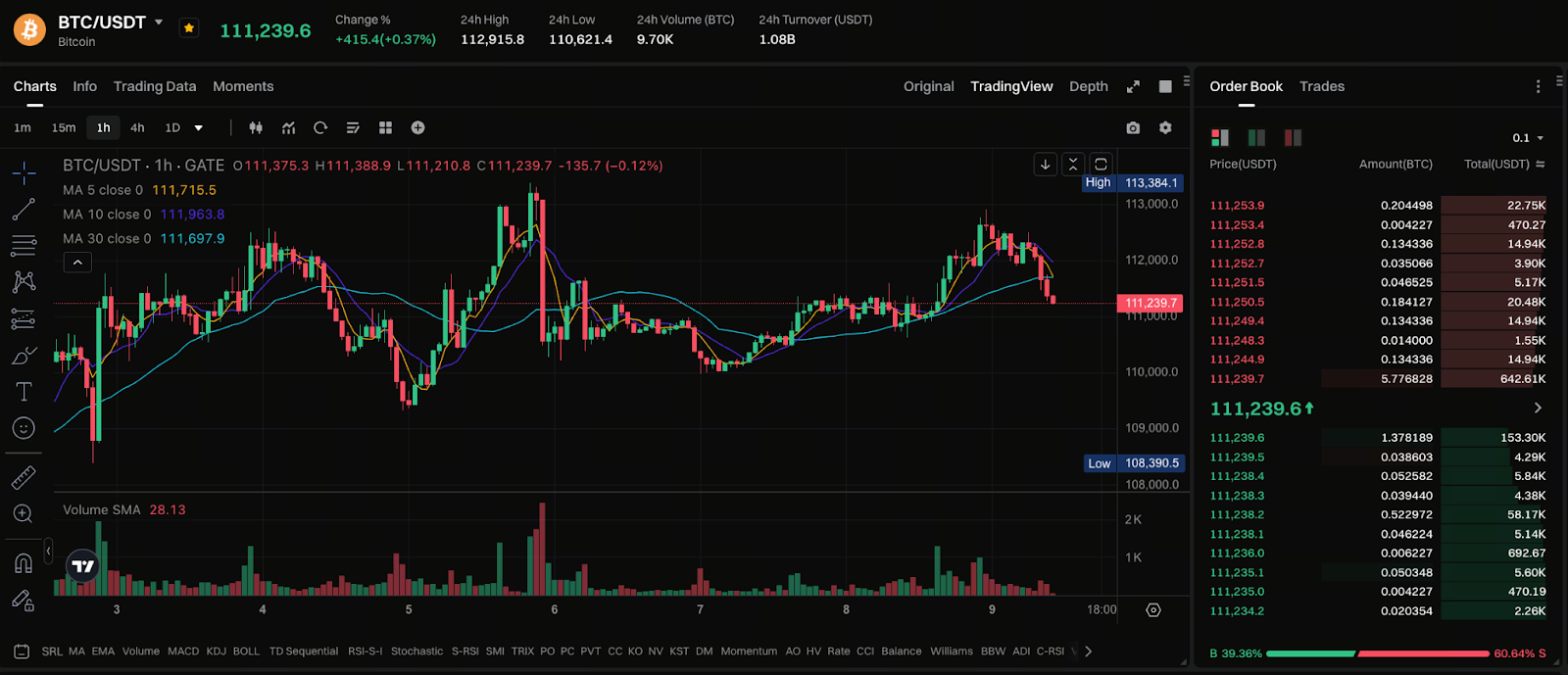Will Bitcoin Face a Major Correction? Unveiling the Logic Behind the Crash
The Origins of the Bitcoin Crash Narrative
Recently, renewed discussions about a possible “Bitcoin crash” have emerged in the market. Some analysts contend that after several breakouts and new all-time highs, Bitcoin has entered overheated territory. If the global economic environment deteriorates, expectations for U.S. interest rate hikes intensify, and liquidity tightens, investors may grow increasingly cautious. This could potentially trigger a price correction.
Current Bitcoin Price Trend Analysis

Chart: https://www.gate.com/trade/BTC_USDT
As of early September, Bitcoin is consolidating around $112,000. Although this level remains robust, the market has cooled off since its previous highs. Some investors fear that if capital inflows slow, large-scale sell-offs could spark another round of price declines. On the other hand, continued institutional buying indicates that the market is not uniformly bearish.
Historical Review: Past Bitcoin Crashes
Bitcoin has experienced several dramatic price drops throughout its history. In 2013, the price plunged from $1,000 to under $200; in 2018, during the Crypto Winter, Bitcoin fell from $20,000 to $3,000; in the 2022 liquidity crisis, Bitcoin lost half its value in just a few months. Together, these episodes underscore Bitcoin’s extreme volatility.
Investor Psychology and Market Sentiment
“Fear and greed” remain key drivers of Bitcoin price action. When prices climb, investors are prone to chasing momentum; during downturns, panic selling can trigger a stampede. Dramatic swings in sentiment, rather than fundamental shifts, cause most so-called “Bitcoin crashes.” By understanding this dynamic, newcomers can approach the market more rationally.
Risk Mitigation Strategies: How to Reduce Exposure
- Set stop-loss orders: Whether you choose 10%, 20%, or a lower threshold, setting stop-loss levels helps limit losses during sharp downturns.
- Scale in to your position: Instead of buying all at once, accumulate Bitcoin in increments to reduce average cost.
- Combine long-term holding with short-term tactics: Long-term investors can use dollar-cost averaging, while short-term traders may seek opportunities during periods of volatility.
- Manage your position size: Don’t allocate all your capital to Bitcoin. Diversifying across multiple assets helps mitigate risk.
Conclusion and Outlook
Whether Bitcoin will truly experience a crash remains uncertain. What is clear is that volatility is intrinsic to Bitcoin. Newcomers should avoid being swayed by extreme market narratives and instead seek a rational balance between risk and reward through disciplined strategies.
Related Articles

2025 BTC Price Prediction: BTC Trend Forecast Based on Technical and Macroeconomic Data

Flare Crypto Explained: What Is Flare Network and Why It Matters in 2025

Pi Coin Transaction Guide: How to Transfer to Gate.com

How to Use a Crypto Whale Tracker: Top Tool Recommendation for 2025 to Follow Whale Moves

What is N2: An AI-Driven Layer 2 Solution


